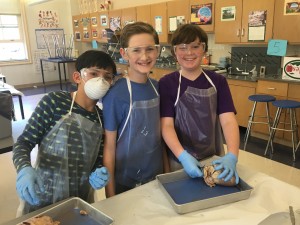“So, Jimmy, after I finish taking off your cast, I would like to talk to you about something. As we both well know by now, you broke your radius in a soccer accident. Your father asked me to teach you a little about the different bones and their classifications, and I have a minute so I thought I would give it a try.” I said, starting up the cast removal machine.
“But I will only do so if you are up for it. What do you say?” I could see him struggle with the cast saw.
“Ok, were done.” I pulled the cast from his arm. “So, do you want to?”
“Yeah, sure. I mean I guess.” He said, still amazed at seeing his bare arm.
“Not the most enthusiastic response, but I’ll take it. Let’s start with the long bones, since the bone you broke was one.” He seemed to have gotten over his arm and was paying attention now.
“Long bones are, as you may have guessed, long. They mostly help the body with movement and fluidity. Some examples are the femur, fibula, and tibia in the leg, which allow us to walk.” I could see his face light up.
“Or the radius in the arm! Like the one I broke!” He was so excited.
“Yes, very good. Can you guess what the next bone class is?”
“Is it… short?” I could see he had a real interest in this stuff.
“Of course!” I said. “They tend to be about as long as they wide, and they all fit together to make our wrists and ankles.” He stared up at me attentively, waiting for me to go on. I love teaching kids about this stuff.
“Then we have the Sesamoid bones, which are a little funky. These are bones that are embedded in a tendon, and help with joint movement. Do you have any idea where you might have one of these?” I asked.
“Hmm…. Like, your kneecap?” He was looked up at me.
“Yes! Great job! That is called the patella. You also have some little ones in your fingers. Next, we have flat bones, which are there to help protect your organs, like your heart and your lungs. You want to take a stab at this one?” I said to him.
“Your chest bone?”
“Again, very good!” I really was impressed this time. “That is called the sternum in the medical world. I bet you’ll like this next one. These are your Irregular bones. They are just little outliers that don’t fit into any other categories. They all have different uses. You have some of these in your vertebrae, and there is one called the Sacrum.”
That caught his attention. “That is so cool! I really like learning about this!”
I smiled. “Well good! It looks like you must go now, but next time I will pull out my little skeleton and we will see if we can find all of these bones!”
“Ooh! Sounds fun!” He said, exited. “Wait, real quick, what does the skeletal system as a whole do?”
“Well Jimmy, it provides support for your body and allows you to do everyday things. Without it we would just be blobs! See you next time.” I said, as his dad walked in to take him home. That was one fun day.



